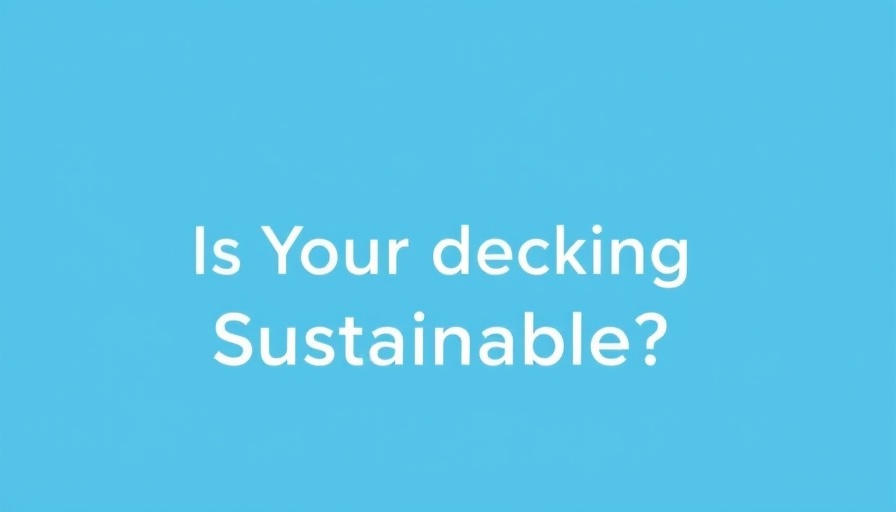
Building a Greener Future: The Importance of Sustainable Decking
As we continue to grapple with the effects of climate change, our choices in home improvement reflect our commitment to sustainability. Choosing sustainable decking materials is not merely a trend—it's a vital decision that can lead to a healthier planet. Made from eco-friendly substances and employing responsible production methods, these materials represent a significant stride towards environmental protection.
Why Sustainable Decking Matters
Decks serve as gateways to our outdoor spaces, and they should harmonize with the surrounding environment. Traditional decking often leads to deforestation, increased carbon footprints, and significant waste. On the other hand, sustainable options focus on minimizing these negative impacts while providing beauty and durability.
Key Benefits of Sustainable Decking
Choosing eco-friendly decking materials comes with several advantages:
- Eco-Friendly Production: Sustainable decking materials are often sourced sustainably or made from recycled content, drastically reducing the demand for virgin resources.
- Durability and Longevity: Many sustainable options resist rot and mold, offering lifespans that can exceed 25 years.
- Low Maintenance: These materials typically require less upkeep, reducing the need for harsh chemicals and additional resources.
- Energy-Efficient Manufacturing: Sustainable brands often utilize low-energy processes in their production, adhering to green building standards.
Top Sustainable Decking Materials
Understanding the types of sustainable decking materials is crucial when planning your outdoor space. Below are some excellent choices:
1. Recycled Composite Decking
This innovative material contains a mix of reclaimed wood fibers and recycled plastics. It's resistant to moisture, fading, and warping—ideal for various climates. Brands like Trex and Millboard adopt practices that satisfy environmental commitments while offering beautiful, durable decking.
2. Modified Timber Decking
Look for woods certified by organizations like the Forest Stewardship Council (FSC). Modified timber options, such as Accoya and Kebony, provide natural aesthetics combined with exceptional durability, making them a wonderful choice for a long-lasting deck.
3. Bamboo Decking
A rapidly renewable resource, bamboo matures in just 3-5 years. Bamboo decking is naturally strong, dense, and pest resistant. Options like Moso Bamboo elevate this material's stability and longevity, further illustrating its potential in sustainable construction.
Enhancing Sustainability Through Practices
Incorporating sustainable decking materials is the first step—implementing green practices amplifies your impact. Here are some strategies to consider:
- Use Certified Materials: Seek out wood certified by the FSC or PEFC to ensure environmentally responsible sourcing.
- Opt for Local Products: Whenever possible, purchase materials produced close to your home to reduce transportation emissions.
- Consider Installation Techniques: Install your deck with techniques that minimize waste and energy consumption, such as using fewer cuts where possible.
- Think Long Term: Investing in durable materials and quality installation results in a longer-lasting product, ultimately reducing the cycle of replacing decks.
Future of Sustainable Decking
The future looks bright for sustainable decking materials, with both industry leaders and consumers increasingly prioritizing eco-friendly options. As innovation in material science continues to advance, homeowners can expect even more choices that are conscientious of environmental impact, affordability, and aesthetic appeal. By choosing sustainable decking today, you’re paving the way for a greener tomorrow.
Whether you are an aspiring DIYer or planning a substantial renovation, understanding sustainable options in decking encourages an eco-friendlier lifestyle. Join the movement toward environmentally responsible living—your choices matter!
 Add Row
Add Row  Add
Add 


 Add Row
Add Row  Add
Add 

Write A Comment